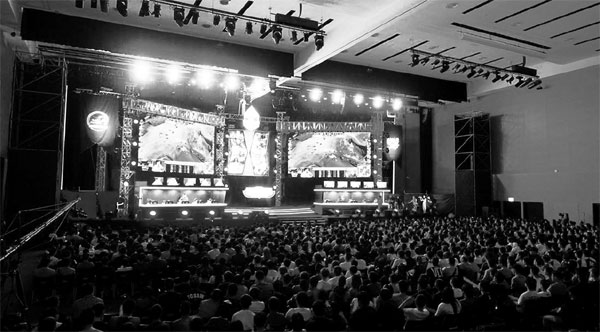Southeast Asia plays catch-up in online speeds for e-sports
Updated: 2016-09-09 11:26
By Haky Moon in Hong Kong(China Daily USA)
|
|||||||||
|
An e-sports competition in Kaohsiung, Taiwan. AFP |
E-sports tournaments are becoming the next big thing across Southeast Asia but the growth of the industry still depends on the development of infrastructure throughout the region.
Vietnam is a case in point. A rapidly developing country, it has relatively good infrastructure and internet penetration. E-sports is quickly gaining traction there thanks to a relatively large and young population and ongoing improvements in network infrastructure.
E-sports, such as multiplayer online battle arena games, are competitions staged on electronic system platforms and mediated via human-computer interfaces.
Tournaments today, with prize money and even professional players, can provide live broadcasts and have the potential to attract vast numbers of spectators.
Potential in Vietnam
"Vietnam has a hundred million people and it also has the highest MAU (monthly active users) for League of Legends," says Derek Cheung, founder and CEO of Hong Kong Esports, a company that owns a professional team of League of Legends players.
"(Vietnam has) around 5 million MAU. That's a lot more compared to all the users in Taiwan, Hong Kong and Macao - together these only have 2 million MAU.
"(Vietnam) has a large population of young people. Basically every guy stays at home and plays computer games," says Cheung.
Hong Kong Esports' Chief Marketing Officer Paul Chan also speaks of the country's huge potential and its "whole different culture because of the language and the internet speed".
Unfortunately, other Southeast Asian countries do not have the same level of network infrastructure as Vietnam.
Gaming culture differences
Alex Lim, secretary-general of the International e-Sports Federation, notes the differences in gaming cultures across Southeast Asia.
"Generally, Dota 2 and Counter-Strike, these first-person shooting games are the leading games at the moment. Southeast Asia has a very enthusiastic culture toward e-sports, but the infrastructure in the region doesn't really support such trends."
In fact, network infrastructure is crucial when it comes to the localization of new games.
"For instance, when League of Legends was admitted to South Korea, with one of the best infrastructures for networks, the game quickly became trendy. On the other hand, it wasn't as easy for Southeast Asia to apply these new gaming trends," says Lim.
League of Legends is a multiplayer online battle arena game released by Los Angeles-based Riot Games in 2009.
In Taiwan, Hong Kong and Macao, it is the dominant game with 90 percent of the gaming population playing it. In places with weaker networks, players continue with older games.
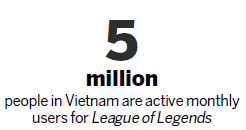
"There is more loyalty toward games like Dota 2 or Counter-Strike. That's why they stick to old games - they don't have a lot of variety like South Korea or China," said Lim.
He says that in the Philippines, for example, people play games at home but not everyone has the internet.
"The gaming trends in these countries don't change that fast. This also means that in Southeast Asia they have longer loyalty toward one game."
Dota 2, an acronym for Defense of the Ancients, is a free-to-play multiplayer online battle arena game developed and published by Valve Corporation, based in Washington. The game was released three years ago.
Counter-Strike is a first-person war game that has become widely popular. It was codeveloped by Valve and released in 1999. The latest version, Counter-Strike: Global Offensive (CS: GO), was released in 2012.
What has become an antiquated game for most players in South Korea and China is still popular across Southeast Asia.
"It's a lot harder to get access and enjoy the game in Southeast Asia," says Lim, adding however that internet speeds and network connectivity did not necessarily "fully impact the trend".
The reality of different network access and speeds creates different dynamics throughout Southeast Asia, with offline users flocking to the e-sports tournament arenas - whereas in markets such as South Korea, there are plenty of live online channels to view games.
"Many people come to offline events, a lot more than in South Korea. It's also because they don't have other options, so when we have e-sports events in Southeast Asia, we see a lot of people coming to the event," says Lim.
For China Daily
- Three women planning 'imminent' attacks arrested in France: minister
- China, Britain vow to deepen military exchanges, mutual trust
- British parliament to debate second Brexit referendum petition
- Chinese women find their way through the glass ceiling
- Rousseff leaves presidential residence in salutation
- Thousands of Chinese rally in Paris to call for 'security for all'
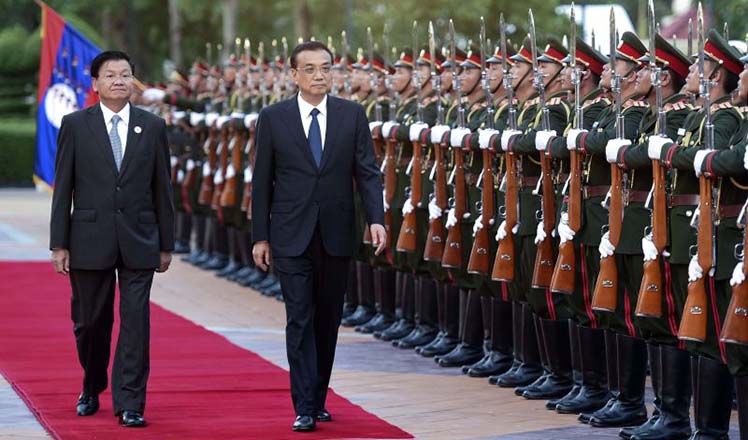
 Sights and sounds of Premier Li's visit to Laos
Sights and sounds of Premier Li's visit to Laos
 Yao Ming and Class of 2016 receive Hall of Fame jackets
Yao Ming and Class of 2016 receive Hall of Fame jackets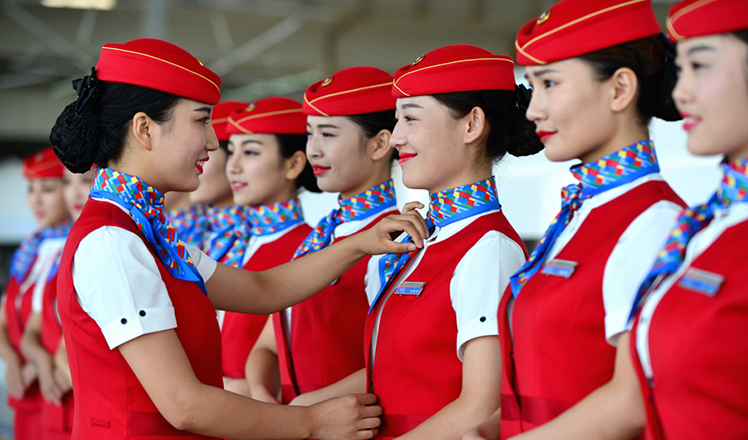
 Bullet train attendants strut new look in Xi'an
Bullet train attendants strut new look in Xi'an
 Ten photos from around China: Sept 2 - 8
Ten photos from around China: Sept 2 - 8
 Turning mud into work of art
Turning mud into work of art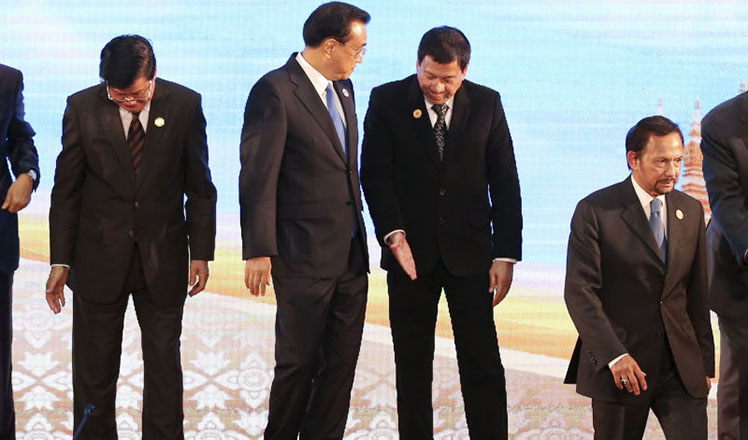
 Unforgettable moments of Premier Li at ASEAN meeting
Unforgettable moments of Premier Li at ASEAN meeting
 Six policy signals China sent at G20 Summit
Six policy signals China sent at G20 Summit
 'First Lady table ware' a hit in Hangzhou
'First Lady table ware' a hit in Hangzhou
Most Viewed
Editor's Picks

|

|

|

|

|

|
Today's Top News
Trump outlines anti-terror plan, proposing extreme vetting for immigrants
Phelps puts spotlight on cupping
US launches airstrikes against IS targets in Libya's Sirte
Ministry slams US-Korean THAAD deployment
Two police officers shot at protest in Dallas
Abe's blame game reveals his policies failing to get results
Ending wildlife trafficking must be policy priority in Asia
Effects of supply-side reform take time to be seen
US Weekly

|

|
